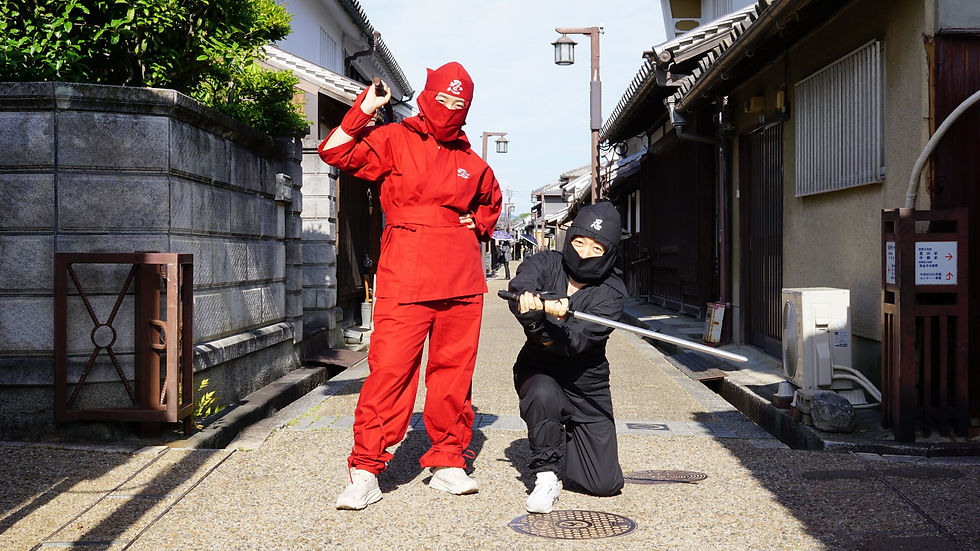Ninja Costume Wearing
- lukes-japan
- Aug 5
- 1 min read
Let's strike a ninja pose for a memorable trip in Japan!
The ninja, also known as shinobi, derives its name from the verb "shinobu," meaning "to conceal," "to endure," or "to steal." These covert agents and mercenaries in feudal Japan specialized in stealth, espionage, sabotage, and unconventional warfare.
Their primary method of operation involved disguise. They would frequently impersonate ordinary people such as merchants, farmers, monks (Komuso or Yamabushi), street performers (Houkashi), or common laborers. The goal was to avoid suspicion, gain access to vital areas, and gather information without drawing attention.
When night operations or infiltration were necessary, ninja wore practical work clothes designed for freedom of movement and minimal noise. Their attire was rooted in the principles of stealth, practicality, and deception, allowing them to seamlessly blend into any environment or role.
These garments were typically loose-fitting for agility, made of durable fabrics like cotton or hemp that wouldn't snag easily and would remain quiet. They were also designed to be secure, preventing them from catching on obstacles. Ninja meticulously avoided anything that could produce noise (like jingling parts) or reflect light.
Instead of pitch black, they favored dark, muted colors that would blend into the natural environment at night, such as dark blue, dark brown, or persimmon. Ultimately, the most effective "ninja attire" was not a distinct uniform at all, but rather their ability to adapt and disappear into their surroundings. The widely recognized all-black suit is largely a theatrical invention that became an enduring, though inaccurate, symbol.










